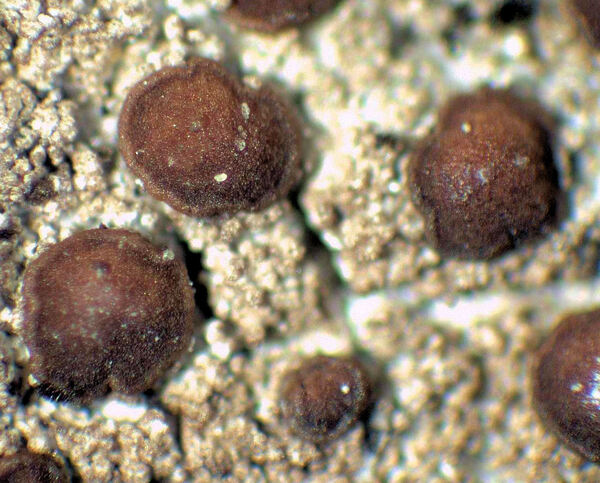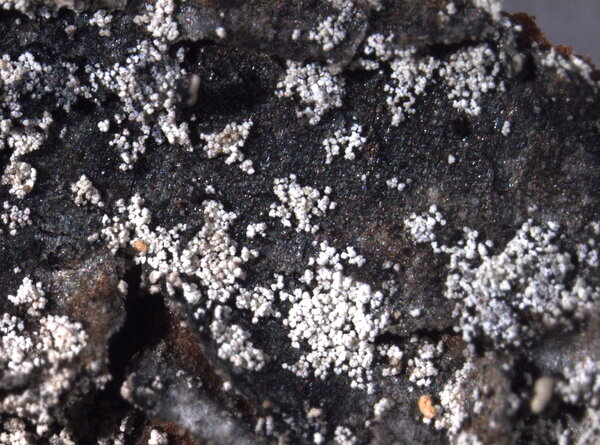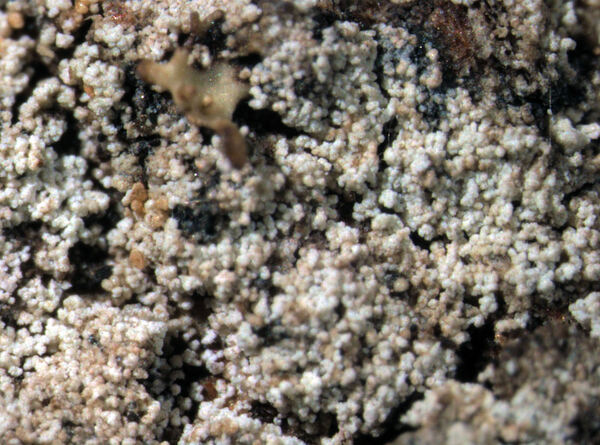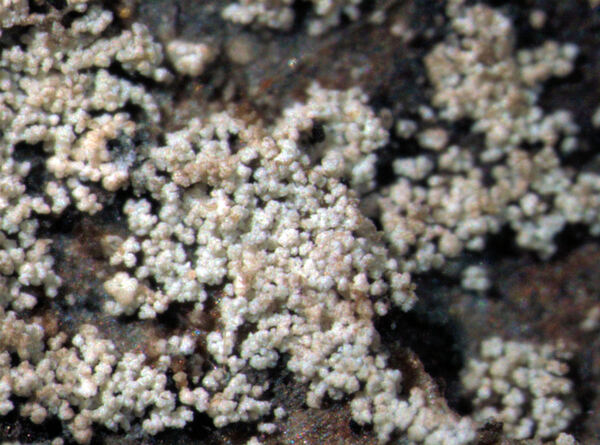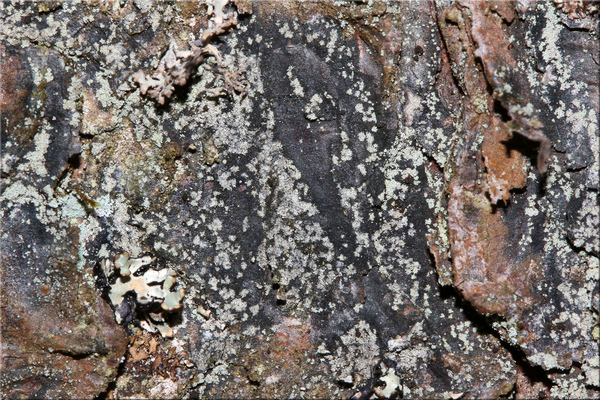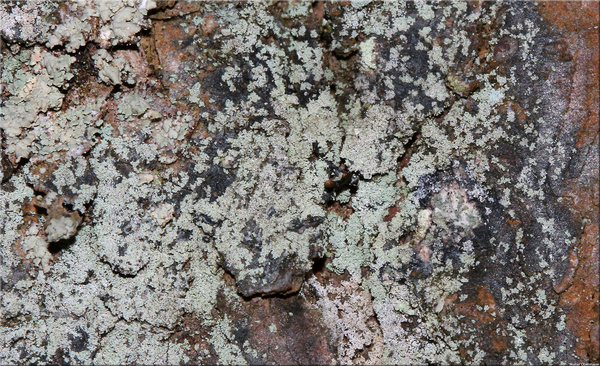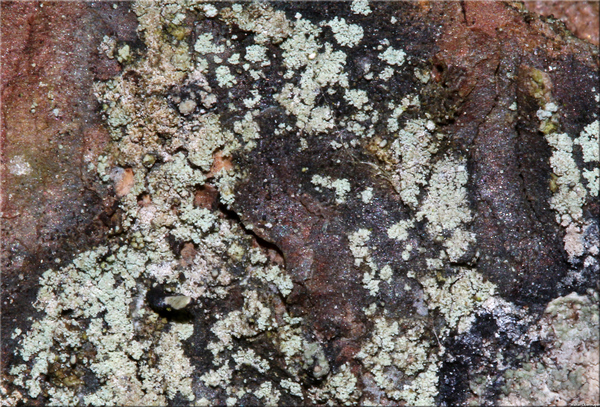Lecidea nylanderi (Anzi) Th. Fr.
Lichenogr. Scand., 1, 2: 462, 1874. Basionym: Biatora nylanderi Anzi - Cat. Lich. Sondr.: 75, 1860.
Synonyms: Lecidea leprodea Nyl.
Distribution: N - Ven (Caniglia & al. 1999), TAA (Nascimbene & al. 2007b, 2014, Nascimbene 2014), Lomb.
Description: Thallus crustose, endosubstratic to episubstratic, sorediate, often delimited by a bluish prothallus, forming to several dm wide patches. Esorediate areoles bluish grey, often indistinct or absent, up to 0.2 mm wide, irregular to rounded in outline, convex, soon bursting apically into discrete soralia which finally may become confluent, forming a subleprose crust. Soredia bluish grey (greenish or whitish in shaded situations), sometimes tinged brown, farinose, sometimes gathered in 20-60(-70) μm wide consoredia. Apothecia rare, lecideine, rounded to deformed, to 0.2-0.8(-1) mm across, with a reddish brown to blackish brown, flat to slightly convex disc and a thin, paler brown, finally often excluded margin. Proper exciple pale brown in section, of radiating hyphae, c. 35 µm wide laterally, c. 75 µm wide at base; epithecium orange brown, inspersed with granules, 10-15 µm high; hymenium colourless, 35-50 µm high; paraphyses coherent, simple or weakly branched and anastomosing, 0.7-1 µm thick at base, the apical cells abruptly swollen and to 4 µm wide; hypothecium colourless. Asci 8-spored, clavate, Bacidia-type. Ascospores 1-celled, hyaline, globose, 5-7.5 µm wide. Photobiont chlorococcoid. Spot tests: thallus K-, C-, KC-, P-, UV+ white. Chemistry: divaricatic acid. Note: a probably circumboreal-montane lichen found on the bark old conifers inside forests, much more rarely on lignum, usually in upland areas. The species, related to Myochroidea leprosula (Printzen 1995), does not belong to Lecidea s.str.: Schmull & al. (2011) presented a phylogenetic tree where it is placed within the Lecanoraceae.
Growth form: Crustose
Substrata: bark
Photobiont: green algae other than Trentepohlia
Reproductive strategy: mainly asexual, by soredia, or soredia-like structures (e.g. blastidia)
Commonnes-rarity: (info)
Alpine belt: absent
Subalpine belt: rare
Oromediterranean belt: absent
Montane belt: very rare
Submediterranean belt: extremely rare
Padanian area: absent
Humid submediterranean belt: absent
Humid mediterranean belt: absent
Dry mediterranean belt: absent
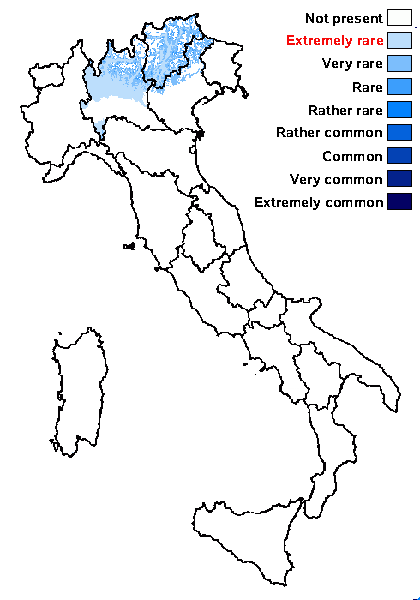
Predictive model
Herbarium samples
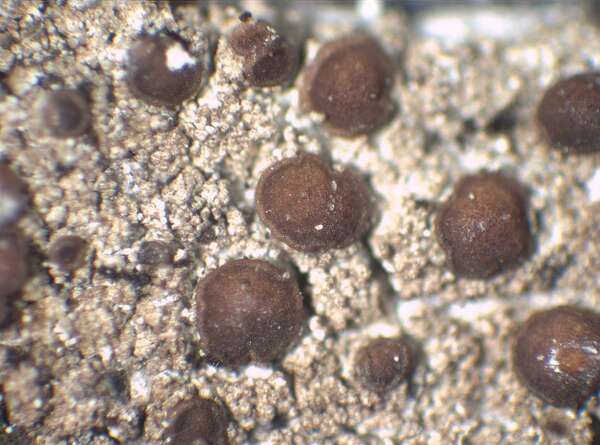

P.L. Nimis; Owner: Department of Life Sciences, University of Trieste
Herbarium: TSB (29491)
2003/03/19
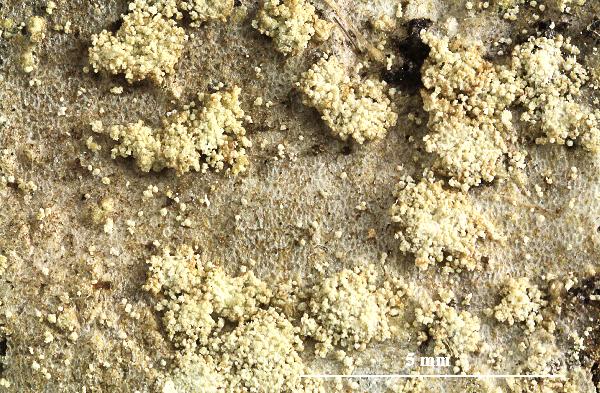

Felix Schumm - CC BY-SA 4.0
[ABL79124], Brazil, Rio Grande do Sul, Antonio Prado, along RS122,
in quarry on tree bark. 28°52'34'' S, 51°13'15'' W, 740 m. Leg. A.
Aptroot (no 79124), 14 July 2019, det. A. Aptroot 2019. - Thallus
effuse, grey-white; soralia varying from small and discrete to confluent
crust. Apothecia rare. Thallus K-, C-, KC-, P-, UV+ white (divaricatic
acid).
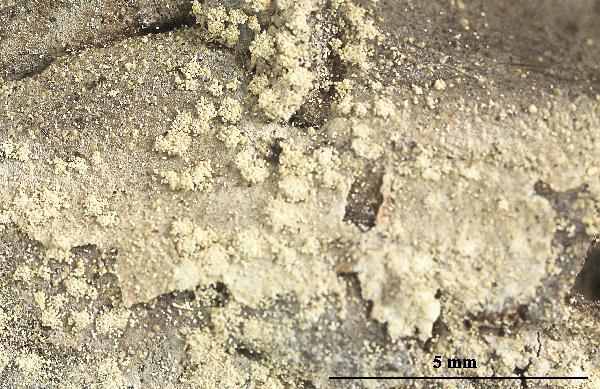

Felix Schumm - CC BY-SA 4.0
[ABL79124], Brazil, Rio Grande do Sul, Antonio Prado, along RS122,
in quarry on tree bark. 28°52'34'' S, 51°13'15'' W, 740 m. Leg. A.
Aptroot (no 79124), 14 July 2019, det. A. Aptroot 2019. - Thallus
effuse, grey-white; soralia varying from small and discrete to confluent
crust. Apothecia rare. Thallus K-, C-, KC-, P-, UV+ white (divaricatic
acid).
Growth form: Crustose
Substrata: bark
Photobiont: green algae other than Trentepohlia
Reproductive strategy: mainly asexual, by soredia, or soredia-like structures (e.g. blastidia)
Commonnes-rarity: (info)
Alpine belt: absent
Subalpine belt: rare
Oromediterranean belt: absent
Montane belt: very rare
Submediterranean belt: extremely rare
Padanian area: absent
Humid submediterranean belt: absent
Humid mediterranean belt: absent
Dry mediterranean belt: absent

Predictive model
| Herbarium samples |


P.L. Nimis; Owner: Department of Life Sciences, University of Trieste
Herbarium: TSB (29491)
2003/03/19


Felix Schumm - CC BY-SA 4.0
[ABL79124], Brazil, Rio Grande do Sul, Antonio Prado, along RS122, in quarry on tree bark. 28°52'34'' S, 51°13'15'' W, 740 m. Leg. A. Aptroot (no 79124), 14 July 2019, det. A. Aptroot 2019. - Thallus effuse, grey-white; soralia varying from small and discrete to confluent crust. Apothecia rare. Thallus K-, C-, KC-, P-, UV+ white (divaricatic acid).


 INDEX FUNGORUM
INDEX FUNGORUM
 GBIF
GBIF
 DOLICHENS
DOLICHENS
